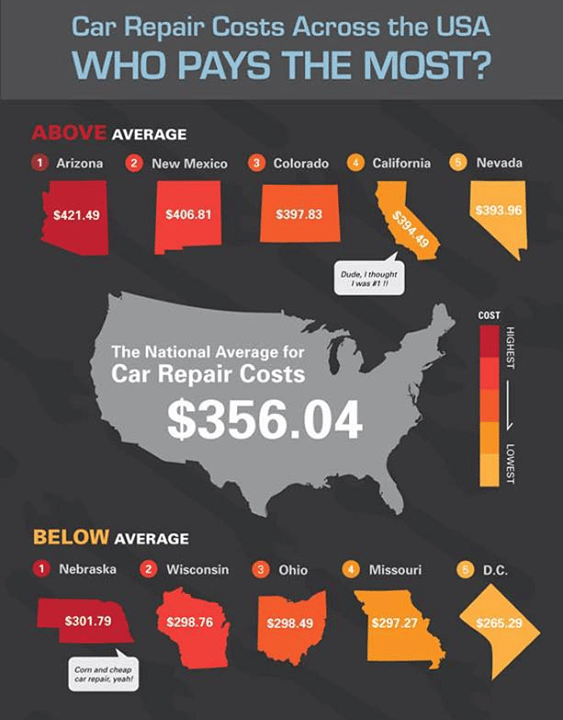Seeking Clearness On The Warning Lights Presented On Your Cars And Truck'S Control Panel? Learn How They Connect To Your Lorry'S Health And Wellness
Seeking Clearness On The Warning Lights Presented On Your Cars And Truck'S Control Panel? Learn How They Connect To Your Lorry'S Health And Wellness
Blog Article
https://zandermhcwq.yomoblog.com/37583265/learn-just-how-to-successfully-pick-the-ideal-automobile-repair-shop-with-these-10-professional-pointers Composed By-Termansen Torres
When you're behind the wheel, those glowing caution lights on your control panel can be a bit difficult. Do https://caidenytlex.blogsuperapp.com/31723733/prepared-yourself-to-look-into-the-world-of-vehicle-repair-where-shocking-understandings-await-that-will-certainly-reshape-your-point-of-view-you-ll-be-shocked-by-what-has-escaped-your-notification know what they're trying to tell you concerning your vehicle's wellness? Understanding the significance of these lights is essential for your security and the longevity of your vehicle. So, the next time among those lights pops up, wouldn't you intend to understand its message precisely and take the required actions to resolve it?
Common Warning Lighting and Interpretations
Recognize common warning lights in your car and recognize their significances to ensure risk-free driving.
The most regular warning lights include the check engine light, which signifies issues with the engine or emissions system. If this light begins, it's crucial to have your automobile checked without delay.
The oil stress alerting light suggests low oil stress, calling for prompt focus to prevent engine damages.
A flashing battery light might suggest a defective billing system, potentially leaving you stranded if not attended to.
The tire pressure monitoring system (TPMS) light alerts you to low tire pressure, impacting lorry stability and fuel performance. Neglecting this might lead to dangerous driving problems.
The abdominal muscle light shows an issue with the anti-lock stopping system, endangering your capability to stop rapidly in emergency situations.
Finally, the coolant temperature alerting light warns of engine getting too hot, which can cause extreme damage otherwise settled swiftly.
Recognizing these usual caution lights will assist you deal with problems without delay and keep safe driving problems.
Value of Prompt Interest
Comprehending the usual warning lights in your cars and truck is only the initial step; the significance of quickly resolving these warnings can not be stressed enough to ensure your safety and security when driving.
When a warning light illuminates on your dashboard, it's your cars and truck's way of communicating a potential concern that requires attention. Overlooking carwashinteriorandexteriorcleaningnz can result in a lot more serious troubles later on, jeopardizing your security and possibly costing you more out of commission.
Prompt focus to cautioning lights can protect against failures and accidents. For instance, a blinking check engine light can indicate a misfire that, if left unattended, might cause damage to the catalytic converter. Resolving this immediately can save you from a costly repair.
In a similar way, a brake system warning light may signify reduced brake fluid or used brake pads, crucial parts for your safety and security when driving.
DIY Troubleshooting Tips
If you notice a warning light on your dashboard, there are a few do it yourself troubleshooting ideas you can attempt before looking for expert assistance.
The initial step is to consult your automobile's guidebook to understand what the details caution light suggests. In some cases the issue can be as simple as a loose gas cap activating the check engine light. Tightening the gas cap might settle the problem.
One more usual concern is a reduced battery, which can activate different advising lights. Inspecting the battery connections for rust and ensuring they're secure could repair the trouble.
If a caution light lingers, you can attempt resetting it by disconnecting the car's battery for a few minutes and then reconnecting it. Additionally, inspecting your automobile's liquid degrees, such as oil, coolant, and brake liquid, can aid troubleshoot advising lights associated with these systems.
Conclusion
To conclude, understanding your cars and truck's warning lights is vital for maintaining your car running efficiently and safely. By without delay attending to these signals and understanding what they indicate, you can stay clear of costly repair services and prospective breakdowns.
Remember to consult your automobile's handbook for specific information on each advising light and act accordingly to ensure a hassle-free driving experience.
Remain informed, remain safe on the road!
